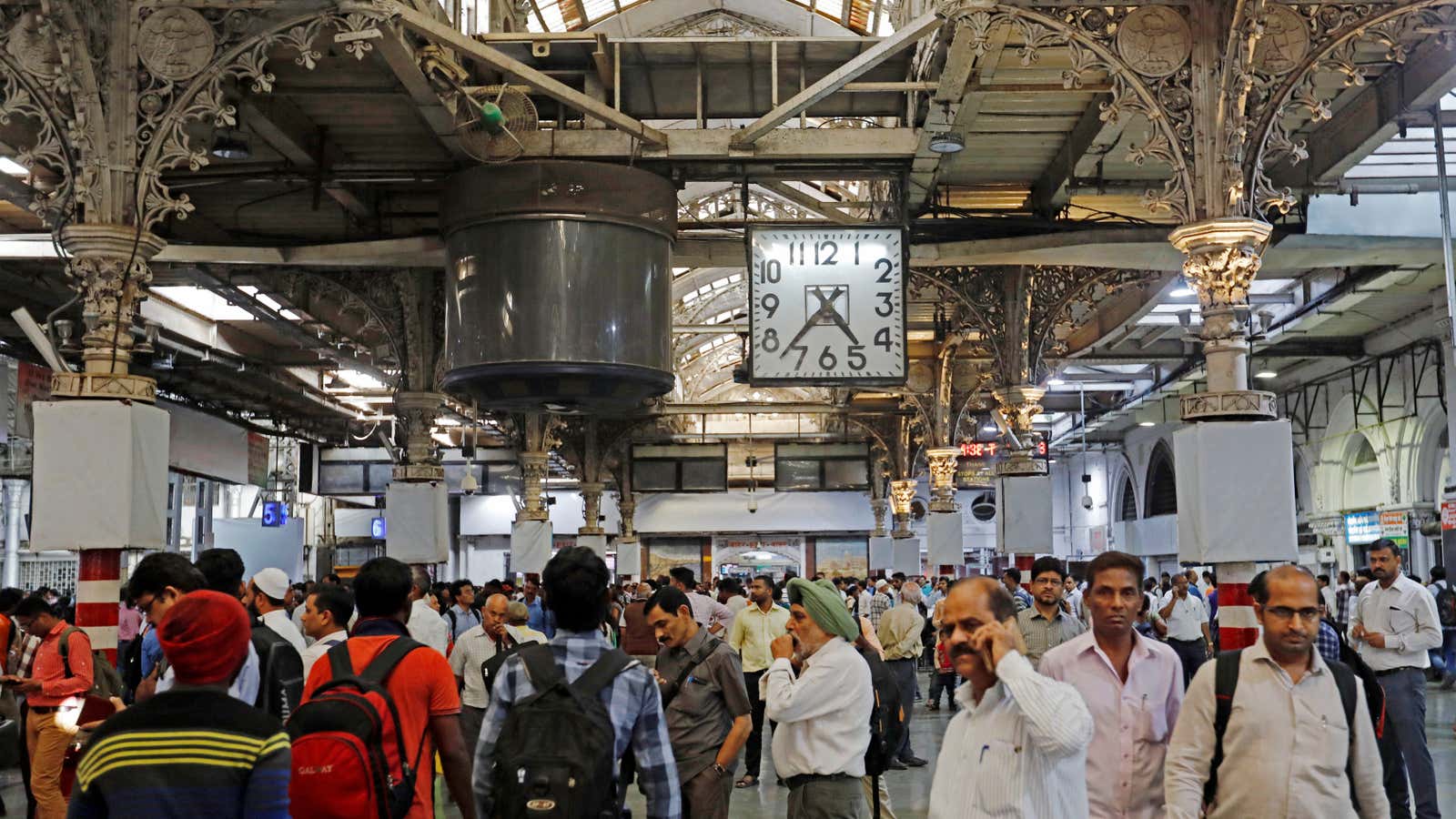Mumbai’s local trains aren’t called the city’s lifeline for no reason. Over 7.5 million commuters, or 40% of the population of India’s financial capital, use the network that has more than 2,300 trains running over 465 kilometers daily.
Now, one of the world’s largest e-commerce companies has taken note.
On Sept. 09, Amazon India announced a partnership with the Indian Railways to set up pickup kiosks in four of the busiest local train stations across Mumbai—the Chhatrapati Shivaji Terminus (CSTM), Thane, Dadar, and Kalyan. Customers can select these kiosks as a pickup location on the checkout page while shopping on Amazon.in.
“The suburban railway network forms the backbone of public transportation in Mumbai,” Prakash Rochlani, director of last-mile transportation at Amazon India, said in a press release. “We are excited about our partnership with the Indian Railways because it will help us provide an easy and convenient service for customers via these pickup kiosks when they are in transit every day.”
Tried-and-tested
Setting up pickup points in public locations is not new for the Seattle-headquartered giant.
Amazon has been putting lockers in supermarkets, post offices and transport hubs across Europe since 2011. It said it plans to install 1,000 such lockers in France last year. In June this year, the company set up physical kiosks in a handful of railway stations across London to sell a rotating selection of items at discounted prices. These will also double up as pickup points.
With the rise of online shopping worldwide, lockers have become a rage around the world. China is home to more parcel lockers than the rest of the world combined. Express locker system Hive Box, which is used extensively by internet giant Alibaba, has 150,000 locations. Beijing-headquarter e-tailer JD has at least 50,000 locker installations exclusively for its JD delivery fleet.
And companies are getting innovative. In Japan, for instance, cool lockers are gaining popularity for storing perishables.
In the US, brick-and-mortar retailers have taken advantage of the “click-and-collect” system. Instead of lockers, the likes of Best Buy, Target, Walmart, and Home Depot allow customers to place orders online and pick them up from their nearby stores.
Win-win-win
Dispatching packages to individual addresses on tight delivery timelines often entails sending out vehicles before they’re full. This raises costs and contributes to traffic congestion and air pollution. And if the customer isn’t home at the time of delivery, it’s a wasted trip.
The train station pickup points will likely lessen the logistics burden and cut out these mal-effects on the environment to some extent, and make life easier for online retailers and customers.
Amazon’s railway tie-up has come right at the start of the festive season in India, which will end in December. During these four months, retail sales in India skyrocket. As a preparation for the festive season demand, Amazon’s rival Flipkart also said yesterday (Sept. 09) it has on-boarded 27,000 kirana stores across 700 cities to strengthen last-mile delivery.
What’s more, installing lockers seems to be a lucrative move for the railways, too.
Mumbai railways will earn around Rs6 lakh ($8,349) every quarter from Amazon India for allotting space for the kiosks, Mumbai Mirror reported in early September, quoting unnamed central railway officials.
In New York, too, the Metropolitan Transport Authority (MTA) is also looking at setting up e-commerce pickup locations to boost revenues. Germany’s national railway, Deutsche Bahn, too, launched interactive lockers that are available 24×7 for consumers to pick up online orders and other parcels, retrieve their laundry and dry cleaning, or fetch and drop off keys for a vacation rental or car rental.
